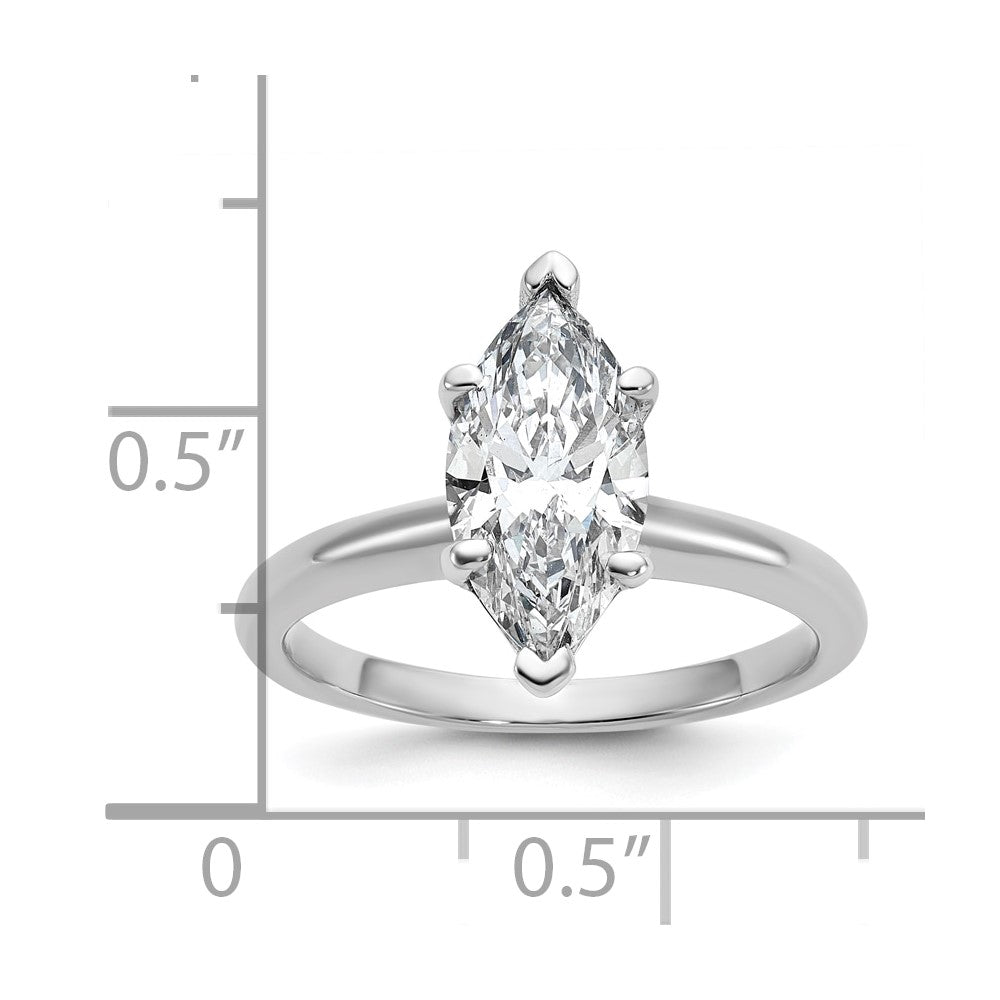
Free Domestic & International Shipping for All Orders Over $250 Shop Now







Elevate your love story with this timeless 14K White Gold 2-Carat Lab-Grown Diamond Marquise Solitaire Engagement Ring. Showcasing a dazzling marquise-cut diamond, its clarity shines from VS to SI+, while the pristine G+ color captures brilliant light. Set on a polished, rhodium-plated band that's both solid and stylish, it offers a standard fit with sizes ranging from 5 to 9. Its faceted cut and rounded edge make it perfect for life's treasured moments. Crafted with care, this stunning piece ensures that the 14K White Gold 2-Carat Diamond Ring will dazzle and endure.
SKU: SOL-200MQ-WLG
UPC: None
Precious Metal Type: 14k White Gold
Width: 2.25 mm
Weight: 2.98 gm
Diamond Weight: 2 gm
What Are Lab-Created Diamonds?
Lab-created diamonds are an exceptional blend of science and craftsmanship. While natural diamonds are formed deep within the earth over billions of years, lab-created diamonds are grown in controlled environments using advanced technology that replicates the natural process. By applying extreme heat and pressure, these diamonds are fully formed within weeks to months. Since they can be produced in abundance, lab-created diamonds are typically more affordable, making larger diamonds more accessible. However, their abundance may affect their long-term value.
Are lab-created diamonds the same as natural diamonds?
Lab-created diamonds share the same optical, physical, and chemical properties as natural diamonds. The primary difference lies in their origin and the time taken to form.
Is a lab-created diamond better?
Both lab-created and natural diamonds vary in grading. Lab-created diamonds often allow buyers to maximize their budget, offering more size for the same cost. Natural diamonds, however, are celebrated as unique works of nature.
Where do lab-created diamonds come from?
Lab-created diamonds are formed in laboratories using advanced technology. A diamond seed—a tiny carbon crystal—is exposed to high heat and pressure with a carbon coating to grow into a larger diamond crystal.
Are lab-created diamonds or natural diamonds higher quality?
Neither type is inherently higher quality, as both are available in a range of colors, cuts, clarity, and carat weights.
Can a trained eye distinguish lab-created from natural diamonds?
Because lab-created diamonds share the same optical, chemical, and physical characteristics as natural diamonds, they cannot be distinguished even under 10x magnification.
Finish: Polished
Stone Quantity_1: 1
Band Width: 2.25 mm
Feature: Solid
Stone Shape_1: Marquise
Stone Size_1: 6.9x6.9
Edge Type: Rounded
What Are Lab-Created Diamonds?
Lab-created diamonds are an exceptional blend of science and craftsmanship. While natural diamonds are formed deep within the earth over billions of years, lab-created diamonds are grown in controlled environments using advanced technology that replicates the natural process. By applying extreme heat and pressure, these diamonds are fully formed within weeks to months. Since they can be produced in abundance, lab-created diamonds are typically more affordable, making larger diamonds more accessible. However, their abundance may affect their long-term value.
Are lab-created diamonds the same as natural diamonds?
Lab-created diamonds share the same optical, physical, and chemical properties as natural diamonds. The primary difference lies in their origin and the time taken to form.
Is a lab-created diamond better?
Both lab-created and natural diamonds vary in grading. Lab-created diamonds often allow buyers to maximize their budget, offering more size for the same cost. Natural diamonds, however, are celebrated as unique works of nature.
Where do lab-created diamonds come from?
Lab-created diamonds are formed in laboratories using advanced technology. A diamond seed—a tiny carbon crystal—is exposed to high heat and pressure with a carbon coating to grow into a larger diamond crystal.
Are lab-created diamonds or natural diamonds higher quality?
Neither type is inherently higher quality, as both are available in a range of colors, cuts, clarity, and carat weights.
Can a trained eye distinguish lab-created from natural diamonds?
Because lab-created diamonds share the same optical, chemical, and physical characteristics as natural diamonds, they cannot be distinguished even under 10x magnification.